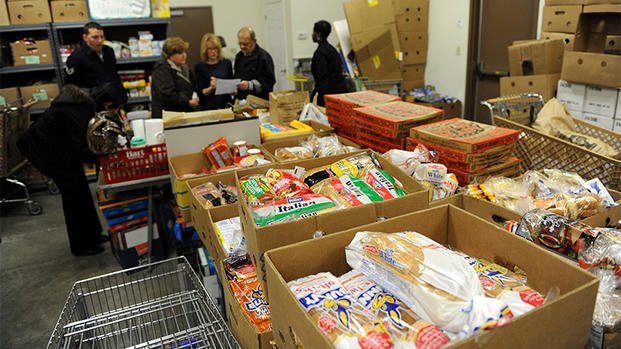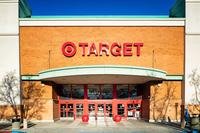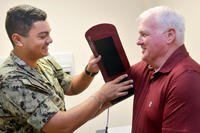Food stamp use in the military’s grocery store system dropped by about 6 percent last year, down from $84.5 million in fiscal year 2014 to $79.5 million in fiscal year 2015.
The decline comes after a big drop between 2013 and 2014 when use went down by 18 percent. That fall, however, can be blamed at least in part on a reduction in the benefit, known as SNAP, at the end of fiscal 2013.
Check out the data since 2010 given to me by the Defense Commissary Agency (DeCA). Note that the increase from 2009 to 2010 (indicated in the 2010 column) is probably thanks to the benefit’s expansion at about that time – the same expansion that went away in 2014.

We could spend a lot of time quibbling over what these numbers mean, but we probably wouldn't come up with many answers. Did usage drop because there are fewer families in the military? The latest numbers show a drop of about 102,000 military family members between 2013 and 2014. Could it be because fewer people know that they can register for SNAP? Is it because fewer people are using SNAP at the commissary and instead taking it elsewhere? Are the bulk of these commissary transactions even active duty families, or are they other types of shoppers (guard, reserve and retiree)? (For what it’s worth, I’ve been trying to get an answer to that question for about a year.)
Even aside the commissary data, it’s really impossible to tell how many active duty service members are actually using food stamps. One estimate indicates that 19,400 active duty service members received food stamp money in 2014. But that’s probably not entirely accurate. Other data from the USDA shows that only about 2,000 active duty members used snapped in 2013, when the transaction amount was quite a bit higher – but that data is flawed, too, since it relies on users to self-identify as active duty.
It’s equally impossible to tell how many military families really are struggling to buy food. Surveys show quite the discrepancy between how many families actually use food stamps and how many are “food insecure.” As an official with anti-hunger organization Mazon: A Jewish Response to Hunger, pointed out in testimony for Congress, a Blue Star Families survey shows that about 6 percent of respondents said they used a food pantry, but only about 2.5 percent said they used food stamps.
Anti-hunger advocates are calling for the government to stop including basic allowance for housing (BAH) payments in the income calculation used to decide SNAP eligibility. Doing so decreases the number of families who can even access the benefit, and unfairly punishes those who are struggling in high cost of living areas where BAH is higher -- but so is the cost of housing. Lawmakers said they would look in to tackling the issue. But all food stamp changes come with a major political fight -- and this is an election year. (Yikes.)
One thing is clear: any hungry military families are too many. The question is: how do we address the problem?









